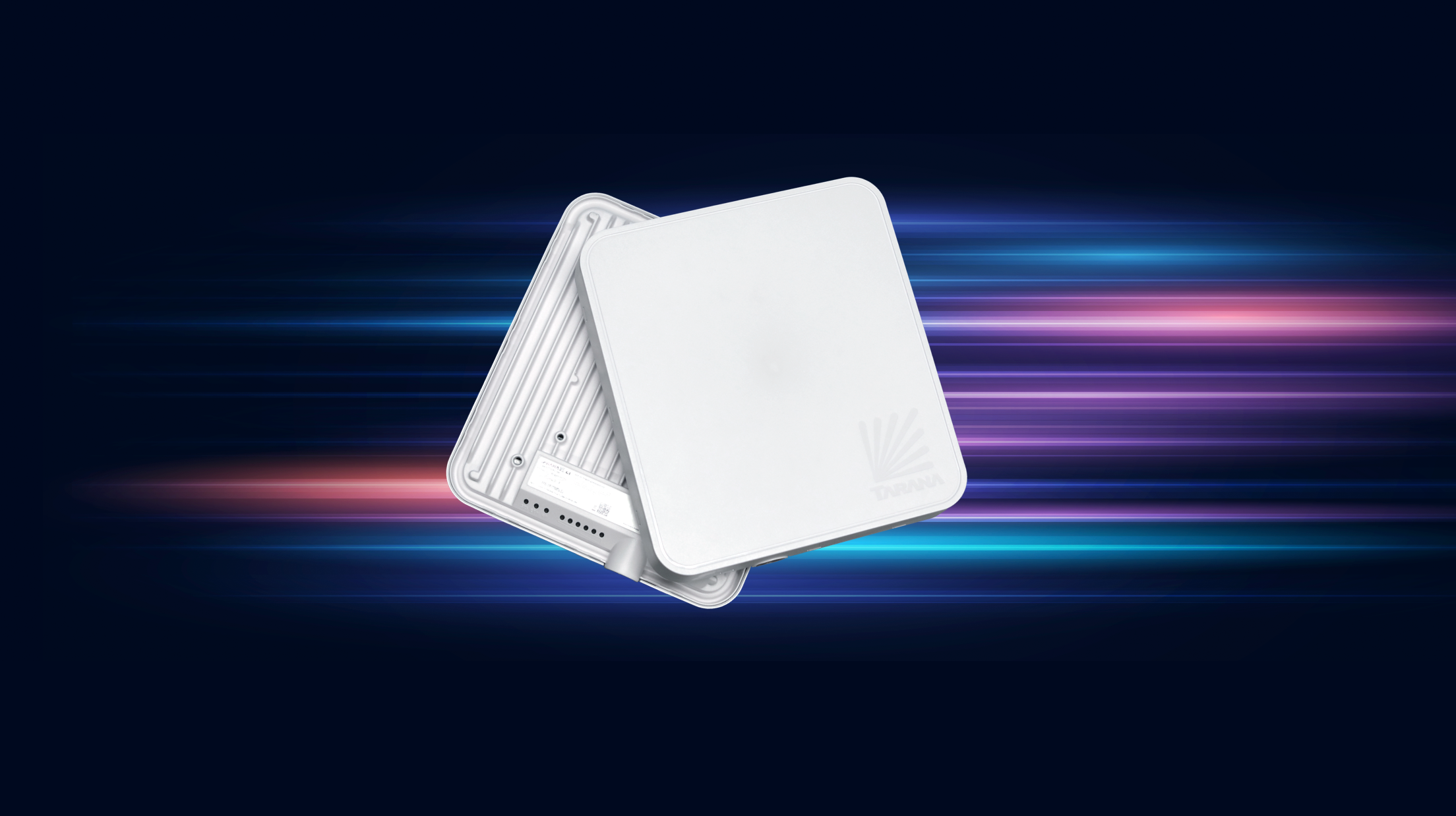The landscape of high-speed broadband in the US is experiencing a dynamic shift, propelled by substantial investments from both private and public sectors. For WISPs, this surge in funding is a double-edged sword — offering a promising opportunity for growth yet posing a formidable challenge as competitors vie for the same subscribers and financial resources. WISPs must strategically position themselves to stay ahead of rising competition. The key to customer retention and growth is delivering high-speed, consistent, and low-latency broadband that addresses rising consumer demands, seamlessly supporting activities such as streaming, gaming, video calling, and remote work.
The newly available 6 GHz band
The expansion of unlicensed broadband operations into the 6 GHz band presents a great opportunity for WISPs to secure and grow their customer bases with high-quality service. With 850 MHz of spectrum newly available for unlicensed outdoor use, WISPs can take advantage of this currently clean spectrum to deliver gigabit broadband speeds in relatively interference-free environments.
That being said, the new 6 GHz band is only a great opportunity when approached correctly. Gigabit speeds in point-to-multipoint operation are contingent on the availability of at least 160 MHz of spectrum per connection. That availability is determined by the Automated Frequency Coordination (AFC) system, which protects licensed incumbent operations (fixed microwave, radio astronomy, and fixed satellite) from interference caused by unlicensed operators using the spectrum. Access points (AP) must query the AFC for available frequencies every 24 hours and operate only in channels unoccupied by incumbents. It is important to note that the AFC only reports on channel use by incumbents, but it does not report use by other unlicensed operators in the spectrum.
While the spectrum is relatively clean today, the landscape is expected to evolve rapidly with the proliferation of network deployments in the band. Interference will come not only from your own multi-tower, multi-radio network, but also from other fixed wireless operators in the same market as well as an influx of WiFi 6E radios expected to number over 2 billion by 2025, according to the Wi-Fi Alliance. Interference and congestion in the 6 GHz band will no doubt become a material issue sooner rather than later.
The usability of the newly available 6 GHz band
For service providers intending to operate in 6 GHz, choosing a technology that both maximizes 160 MHz channel availability and minimizes interference is essential. WiFi-based fixed wireless products miss on both of these requirements, realistically requiring at least 2 160 MHz channels to deliver 360° coverage in single-operator locations, and all 4 available channels in competitive markets (locations with more than one operator).
To quantify the scale of this problem, we worked with Comsearch to run an AFC query on all the tower locations in the FCC database to determine real-world 6 GHz channel availability. We integrated the AFC results with household density information (identifying rural, suburban, and urban density clusters) from the US Census Bureau as well as broadband competition information (number of FWA operators in the same market) from the FCC Broadband Data Collection. These three data sets enabled us to craft a full perspective on the usability of the 6 GHz band in the US.
Locations with Enough 160 MHz Channels to Support Up to 2 Operators in the Same Market
Rural
30%
Suburban
52%
Urban
58%
The results are sobering because 160 MHz channel availability in the 6 GHz spectrum is scarce. In rural America where the digital divide is widest, only 30% of locations have enough 160 MHz channels to support up to 2 operators in the same market.[3] The remaining majority of locations either have insufficient 160 MHz channels, multiple competitors operating in the limited set of channels, or a combination of both, resulting in a low-performance, high-interference environment that precludes delivery of competitive broadband speeds and puts operators at a huge disadvantage. 48% of suburban and 42% of urban locations have the same issue.
It is clearly essential for operators to choose their 6 GHz network technology carefully. The newly available 6 GHz band holds immense promise — unlocking gigabit broadband speeds that can help WISPs secure and grow their customer bases today — but realizing its full potential requires the deployment of the right tools for the job, both to maximize the capacity achieved within the spectrum and to protect against interference, congestion, and competition that are sure to come.
Tarana’s new 6 GHz BN, now available for commercial deployment
Tarana’s new Gigabit 1 (G1) 6 GHz BNs and remote nodes (RNs) comprise the only durable fixed wireless solution that can help WISPs secure and grow their customer bases today and for the long term. G1 supports x2 mode operation, enabling the use of 4 independent and discontiguous 40 MHz carriers, which gives operators unprecedented flexibility in spectrum usage. This is crucial in the 6 GHz spectrum where the AFC may not offer operators 160 MHz, or even 80 MHz, of contiguous spectrum at high power. With 4 independent carriers, G1 has the flexibility to tap 160 MHz of spectrum much more consistently, supporting up to 1.6 Gbps of aggregate capacity per link.

In the same AFC query of the FCC tower locations, Tarana’s technology choice of using 4 independent carriers yields a very substantial (~2x) improvement in aggregate 160 MHz channel availability.
Locations with Enough 40 MHz Channels to Support Up to 2 Operators in the Same Market
Rural
76%
30% with Wi-Fi Chipsets
Suburban
89%
52%
Urban
96%
58%
Across density clusters, operators have significantly higher chances of maximizing the benefits of the new spectrum. 76% of rural, 89% of suburban, and 96% of urban locations have enough 40 MHz discontiguous channels to support 2 or more operators in the same market, enabling high performance and full coverage despite competition.
Protecting your business for the long term
As more operators harness the benefits of the newly available 6 GHz band, it is important to reiterate that the AFC offers no protection from interference against other unlicensed operators. Interference in the 6 GHz band will come sooner rather than later and subscribers have an increasing number of options. In addition to superior spectrum utilization, Tarana’s 6 GHz G1 family is by far the best choice to sustain high performance once a subscriber is connected.
Specifically, Tarana’s 6 GHz family comes with all of the design features that are hallmarks of the commercially successful G1 ngFWA platform, with near-perfect self-interference cancellation, unique asynchronous burst interference cancellation (ABIC), k = 1 universal spectrum reuse, and unrivaled performance in non-line-of-sight conditions. Together, these tools dramatically reduce the effect of new operators and interferers entering shared spectrum. For a more complete description of G1’s unique capabilities, see the ngFWA technology primer.
As we celebrate the new opportunities presented by the 6 GHz band, investing in the right tools is essential for building a future-proof network that can meet the rising broadband demand of the US market. G1 is the only durable approach to securing and growing your fixed wireless customer base.
Tarana G1 radios for 6 GHz are FCC-certified for commercial deployment, and are immediately available for purchase. Contact Tarana at https://www.taranawireless.com/how-to-buy/ for more information.
[2]Rural locations defined as having household density below 250 HHs/mi2. Suburban locations between 250 to 750 HHs/mi2, and urban locations over 750 HHs/mi2.
[3]Operating at the maximum 36 dBm EIRP threshold allowed by the FCC.
[4]4 carriers in x2 mode can each be on different sub-bands, making the most of scarce resources.


